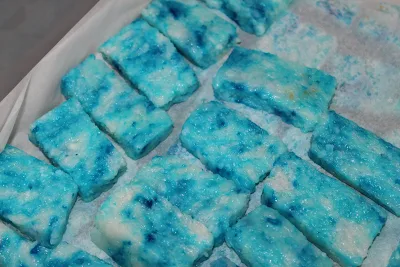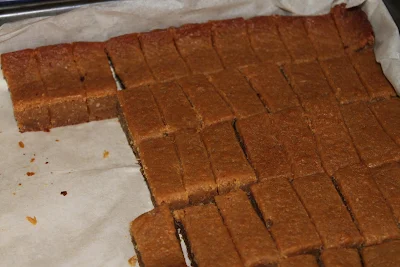Benjamin Michael Butcher was born on 1 July this year.A month later, the immediate family, joined by other relatives and friends, celebrated this occasion by gathering at the residence of one of Ben's grand-uncles. The must-have food for such joyous occasions is the red tortoise, or the ang ku in Fujian dialect (above image), which symbolises celebration, promise and longevity. The outer shape of this Straits Chinese delicacy has a mould that represents a round tortoise - and inside is a yellow bean mix you may recognise, once you bite into it.
Above: the savoury yam cake, garnished with fresh shallot rings, chili bits and deep fried garlic. It is best eaten with a chili sauce.
Below: Singapore styled chicken curry, with potatoes and kick, from one of Ben's grandmothers.
Below: More variety of sweet dessert time cakes.
Like during an Orthodox Christmas, hard boiled eggs are made with coloured shells to signify fertility in southern Chinese practice, adopted by immigrants to South-east Asia and beyond. These eggs are not consumed plain, they are accompanied by vinegar-soaked ginger condiments. (above)
Vinegar is also a main ingredient to marinate pork with fatty layers (below), a much yearned traditional Cantonese dish that does not get made much these days because of its cholesterol and health effects.
I found this delicious dark soy sauced stir fried noodles (above) at this party for Ben. Made famous by street vendors in the Chinatown heart of the Malaysian capital city of Kuala Lumpur, I first encountered this as a university student and actually ate it beside a stinking open drain - and despite that fact, I can recall it was truly tasty.



























